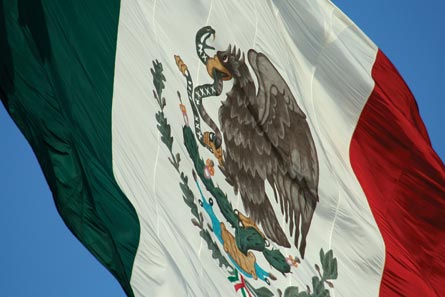The long-running question over Mexican air transport's need for two major carriers could be answered with the bankruptcy of Mexicana. As natural forces play out is this another market where the survivors are a transformed network player and a low-fare upstart?
Mexicana is the first major casualty of the global financial crisis and, ironically, it fell just as both the industry and Mexican aviation were starting to recover. Airlines never collapse for only one reason, and there are plenty in Mexicana's case - a swarm of low-cost carriers, the H1N1 virus, excessive labour and fuel costs - but one cause near the top of this list has to be the financial markets.
|
|---|
©Esparta |
The $250 million that it planned to raise in the markets has become the scaled-back $100 million to $150 million that chief executive Manual Borja says Mexicana must find in order to survive. Because it failed to sell its bonds, it desperately seeks most of those funds now as a rescue.
AFTER THE BLAME GAME
Beyond the question of whether it can raise this money and how to assign blame looms the bigger question of what Mexican aviation will look like after this bankruptcy. Even if Mexicana survives short-term, questions will persist about the longer-term structure of aviation in Mexico. Transport officials have argued since the days of Cintra, when both Mexicana and Aeromexico were owned by the government, that the two airlines should merge.
The competition commission, which has the final say, blocked Mexicana from bidding to buy Aeromexico in 2007, but it has not expressed an opinion since it declared several years earlier that privatisation of the two carriers should be to separate owners. How the same commission would view this question today is hard to say, but merger talk is hypothetical because Aeromexico's owners insist they are not interested in owning or merging with Mexicana.
Nonetheless, this long-running debate could still be nearing its end. If Mexicana dies in bankruptcy, that answers the question of whether Mexico should have one or two major airlines. Even if Mexicana survives, it can only do so by shrinking.
Depending on how much, that too could answer the question. The end of this debate, like a Greek tragedy, could play out several ways. But whichever way it ends, it will be written by economic realities, not by competition officials.
If this is the case, it is instructive to look at the experience in other countries that faced similar debates. Canada, for example, had two legacy carriers - Air Canada and Canadian.
Many argued that the country was not big enough for both of them. Canadian Airlines is now gone, replaced by WestJet, a low-cost carrier that has grown to become Air Canada's domestic rival. The same story played out in Australia - Qantas and Ansett has become Qantas and Virgin Blue. And in Brazil, TAM is the surviving legacy airline, while its low-cost rival Gol has replaced the number two and three legacy carriers - Varig and Vasp.
In all three countries, two or three legacy carriers confronting the same type of low-cost assault as Mexicana and Aeromexico face in Mexico, proved to be one or two too many. In Canada, Australia and Brazil a major low-cost carrier has since emerged to replace all but one surviving legacy airline. It may only be coincidence, but the low-cost carrier in each country has also developed a blend of low-cost and network carrier attributes. The specifics vary, but the outcome has been the same.
Will this also happen in Mexico? Mexicana will struggle to prevent it, but as this unfolds we are likely to be witnesses to an inevitable and natural evolution.
Source: Airline Business























